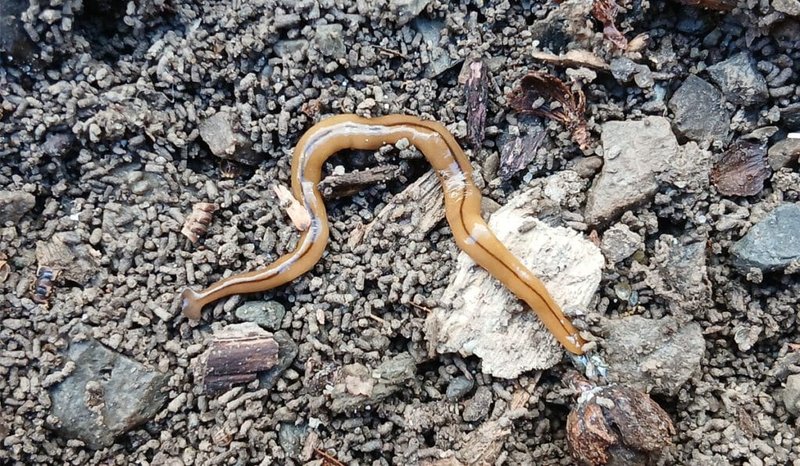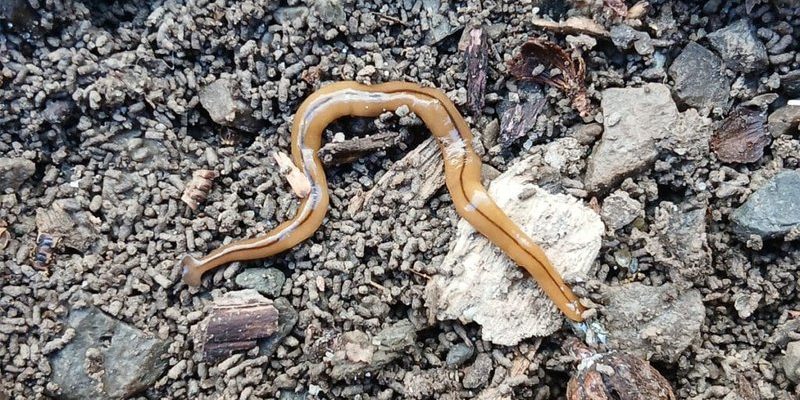
What Are Hammerhead Worms?
Hammerhead worms belong to the group of flatworms known as *Geoplanidae*. They are typically found in tropical and subtropical regions but have crept into other parts of the world, often thanks to human activity. With their long, flat bodies and hammer-shaped head, they can grow up to 12 inches long, which is quite a sight!
You might encounter them during your greenhouse inspections, often hiding in damp areas like soil or mulch. While they can seem harmless at first glance, they are carnivorous and have a diet primarily consisting of earthworms and other soil-dwelling organisms. This diet can lead to *imbalanced soil ecosystems* if their population grows unchecked.
Why Are Hammerhead Worms a Concern for Greenhouses?
You might be thinking, “Are these worms really that big of a deal?” Short answer: Yes, they can be. Their predatory nature puts them at the top of the food chain in the soil, which can disrupt the natural balance essential for plant health. Here’s how:
- Soil Health Impact: Hammerhead worms consume beneficial earthworms, which play a crucial role in aerating the soil and enhancing plant growth.
- Plant Growth: With fewer earthworms present, your plants may struggle to absorb nutrients effectively, leading to stunted growth or even crop failure.
- Potential Toxicity: Some species of hammerhead worms secrete toxins, which might impact not just other soil organisms but potentially harm pets or children if ingested.
With these factors in mind, it’s clear that monitoring hammerhead worm populations in your greenhouse is essential.
Identifying Hammerhead Worms in Your Greenhouse
Identifying these worms is relatively straightforward if you know what to look for. Their unique shape is a key feature. When you see a flat worm that appears to have a hammer-like head, you’re likely looking at a hammerhead worm.
Here are some characteristics to help you identify them more easily:
- Color: They typically come in various shades, including brown, black, or even vibrant colors, sometimes with stripes or patterns.
- Movement: They move in a distinctive way, often wriggling slowly as they navigate the soil.
- Size: Unlike most garden worms, hammerhead worms can grow much larger, sometimes reaching over a foot in length.
If you spot one of these creatures, don’t panic! Understanding their behavior and life cycle can help you manage their presence more effectively.
How Hammerhead Worms Reproduce
You might be surprised to learn that hammerhead worms can be quite the reproductive achievers. They can reproduce through a process called fragmentation, where a single worm can grow into two or more new worms if cut into pieces. They can also reproduce sexually, laying eggs that hatch into new worms. Here’s the kicker: this means that controlling their population can be tricky!
Their *rapid reproduction* might lead to a surge in numbers, especially in favorable warm and humid conditions. So, if you’ve noticed a few hammerhead worms in your greenhouse, it’s wise to act quickly before they multiply.
Best Practices for Managing Hammerhead Worms
So, what can you do if hammerhead worms make an unwelcome appearance in your greenhouse? Here are some strategies to help you manage these creatures effectively:
- Regular Inspections: Frequently check your soil, especially in damp areas, to catch hammerhead worms early.
- Soil Management: Consider rotating your soil and adding beneficial organisms, such as *earthworms* or *nematodes*, to boost health and balance.
- Physical Removal: If you find them, you can manually remove hammerhead worms. Use gloves and dispose of them properly, as they can regenerate if left behind.
These steps can help contain their numbers and protect your plants from potential harm.
When to Seek Professional Help
If hammerhead worms are causing a significant issue in your greenhouse, it might be time to call in the experts. Certain pest control professionals can offer solutions that are safe for your plants while helping you manage these pests effectively.
You might consider professional help if you notice:
- A sudden spike in hammerhead worm populations despite your management efforts.
- Visible damage to your plants that you suspect is linked to the worms.
- A general decline in soil health and plant growth.
Always opt for environmentally friendly pest control methods that won’t harm your plants or the broader ecosystem.
In the world of greenhouse gardening, awareness is key. Hammerhead worms, while captivating in their own way, can disrupt the delicate balance of your soil ecosystem. By keeping an eye on your plants and soil health, you can catch any issues early on and mitigate potential problems.
Remember, it’s all about creating the best environment for your plants. Keeping hammerhead worms in check is just one part of the puzzle. With a little diligence and care, you can enjoy a vibrant, thriving greenhouse, free from the unforeseen risks posed by these unique worms. So, stay curious and proactive—you’ve got this!

